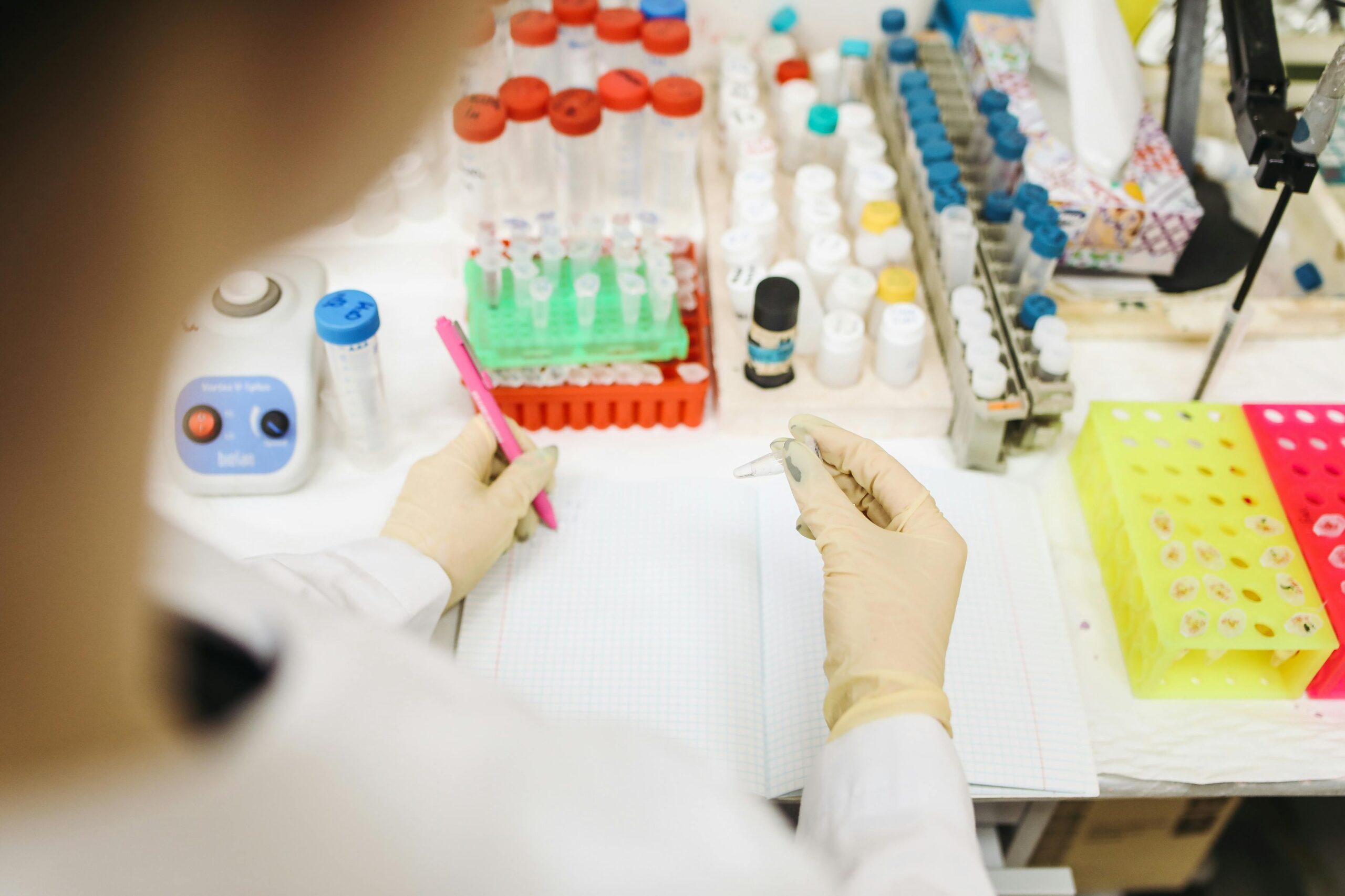How to Improve Your Creatin Test Results: Practical Tips for 2025
In the ever-evolving landscape of testing methodologies, understanding how to enhance your creatin test results has become critical, particularly as we approach 2025. Creatin tests, essential for assessing kidney function and overall health, can greatly benefit from optimized strategies. This article explores various practical tips and techniques to improve your results, ensuring a comprehensive understanding and execution of the testing process. By implementing these strategies, you can ensure higher test quality and efficacy, paving the way for better health insights.

Essential Strategies for Test Optimization
Building on the importance of effective testing, this section delves into key strategies for optimizing your creatin tests. Proper test design and thorough planning are crucial for achieving accurate results. Understanding the various test methods and tools available can enhance the testing experience, ensuring that all variables and criteria are met for successful outcomes.
Understanding Test Design for Creatin Analysis
Developing a solid test design is foundational to enhancing your creatin test results. Test design involves outlining the specific parameters, techniques, and criteria that will guide the testing process. By adopting structured test strategies, testers can address potential pitfalls and ensure a more accurate measurement of creatin levels. Consider utilizing checklists and standard operational procedures to define test characteristics. These elements can significantly influence the reliability and repeatability of the results obtained.
Effective Use of Test Tools and Software
The variety of test tools and software available today can streamline the creatin testing process. Leveraging advanced test management tools allows for better planning and execution of test procedures, facilitating easier tracking of the test progress and results. Choose software that supports automation, as this can drastically reduce human error, allowing for more consistent outcomes. Ensure the selected tools align with your testing needs and include features such as data analysis and reporting capabilities for enhanced test evaluation.
Implementing Robust Test Procedures
A well-defined testing procedure is critical to obtaining trustworthy results. This includes determining the appropriate test environment, setting explicit guidelines for sample collection, and establishing protocols for test execution. Proper test environments maintain integrity, avoiding contamination and variability that could skew results. It is also advisable to carry out periodic review sessions to refine these test procedures based on past feedback and outcomes, ensuring a continuous improvement approach.
Incorporating Feedback for Test Improvement
Regularly collecting and analyzing feedback from testing participants and team members can highlight areas for improvement. This practice encourages a culture of open communication that fosters innovation in testing methods. Consider implementing a feedback loop where insights from previous test outings are discussed and analyzed for future enhancements. This ongoing evaluation can significantly improve the overall testing accuracy and effectiveness.
Understanding Test Analytics for Better Outcomes
With these fundamental strategies in place, understanding how to conduct a comprehensive test analysis can further improve your overall creatin test results. Testing analytics involves scrutinizing the data obtained to better interpret results and adjust processes accordingly. This segment emphasizes effective analytical techniques and methodologies crucial for refining results.
Evaluating Test Results and Metrics
After each testing phase, evaluating results through defined metrics is essential. Establish specific performance indicators that reflect the effectiveness of the test. This could include measures of accuracy, precision, and coverage, allowing for thorough self-assessment. By utilizing robust evaluation methods, you can proactively identify weaknesses in test execution or analysis.
Leveraging Advanced Data Analysis Techniques
Employ advanced data analysis techniques such as statistical modeling and predictive analytics to gain deeper insights into your testing data. Machine learning methodologies can assist in identifying trends and correlations within creatin levels, refining your understanding of contributing factors. Effective data analysis not only enhances immediate test results but also aids in long-term operational adjustments.
Regular Review and Adjustment of Testing Protocols
It is vital to continuously review and adjust testing protocols based on analytical findings. This proactive approach ensures that all aspects of the testing environment are aligned with evolving best practices and any changes in testing standards. Avoid becoming complacent and ensure that periodic audits are scheduled to evaluate the efficacy of current testing protocols and their alignment with optimal outcomes.
Common Pitfalls to Avoid in Creatin Testing
While focusing on improvement, it’s just as essential to recognize common pitfalls that can detract from your testing efforts. Understanding these issues allows you to circumvent them, ensuring a smoother testing process and better results.
Avoiding Sample Collection Errors
One of the most significant risks in creatin testing is incorrect sample collection. This can lead to inaccurate readings and misleading information. Establish strict protocols for sample handling and always verify the identity of the samples collected. Educating staff involved in the sampling process on best practices can prevent mishaps that could compromise results.
Recognizing the Limitations of Test Methods
Each test method has inherent limitations that testers must acknowledge. Certain methods may be more susceptible to contamination or require specific circumstances for accurate results. A thorough understanding of the limitations of your chosen test method is crucial for correct interpretation of results and ensures appropriate contextual understanding during evaluation.
Ensuring Compliance with Testing Regulations
Abiding by regulatory frameworks is a necessary aspect of the testing process. Ensure that all testing procedures meet local and international standards to maintain trustworthiness in your results. Regular audits and compliance checks can help identify areas where adherence may falter, ultimately protecting the integrity of the testing process.

Future Directions in Creatin Testing
As the field of test analysis and design evolves, so too must our approach to testing methodologies. This section prepares you for upcoming trends and advancements in the landscape of creatin testing and offers insights into how these can positively impact results.
Innovations in Test Automation
The rise of automation in testing procedures is paving the way for enhanced efficiency and accuracy. Automated workflows can minimize the potential for human error and expedite the testing process. As testing technology advances, consider seeking software solutions that offer automation capabilities to further enhance your creatin test protocols.
Incorporating Artificial Intelligence in Testing
Artificial intelligence is rapidly becoming an influential force in testing methodologies. AI-powered analytics can provide predictive insights into test results, offering a more nuanced understanding of sample behaviors. By leveraging AI technologies, testers can improve their testing frameworks and make data-informed decisions that truly reflect underlying health conditions.
Integrating Holistic Health Monitoring with Creatin Tests
As health monitoring systems evolve, integrating creatin testing within broader health analytics frameworks is becoming a reality. This holistic approach enables healthcare practitioners to view creatin results in the context of overall patient health, leading to more comprehensive care strategies. Future testing will likely incorporate various biomarkers for a more complete picture of patient health.
Conclusion: Key Takeaways for Improved Test Results
By grasping the importance of optimized testing strategies, leveraging advanced analytics, and recognizing common pitfalls, there is a solid foundation for improving creatin test results going into 2025. The integration of new technologies and methodologies, particularly in automation and AI, will undoubtedly enhance the accuracy and efficiency of testing practices. Remain proactive in refining your processes, ensuring continuous improvement in every aspect of testing to achieve greater successes in your testing endeavors.
Frequently Asked Questions
What are some key factors that influence creatin test results?
Factors such as hydration levels, diet, muscle mass, and medications can influence creatin test outcomes. Understanding these variables is essential for accurate testing.
How often should creatin tests be conducted?
Creatin tests should be conducted as recommended by a healthcare professional, usually based on a patient’s health history and risk factors.
What steps can I take to prepare for a creatin test?
Preparation typically includes following any dietary restrictions and discussing any medications with your healthcare provider prior to testing.
Can lifestyle changes improve my creatin levels?
Yes, adopting a balanced diet, maintaining hydration, and ensuring regular exercise can help manage creatin levels effectively.
Is there a difference between serum creatin levels and urine creatin levels?
Yes, serum creatin tests measure creatin in the blood to assess kidney function, while urine creatin tests evaluate how well kidneys filter this waste product over a specific period.
